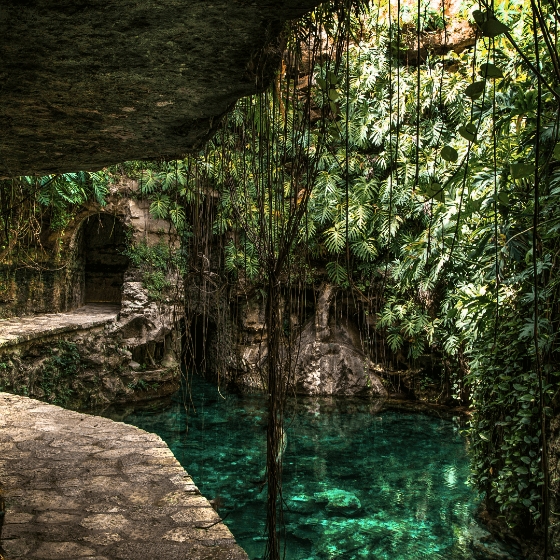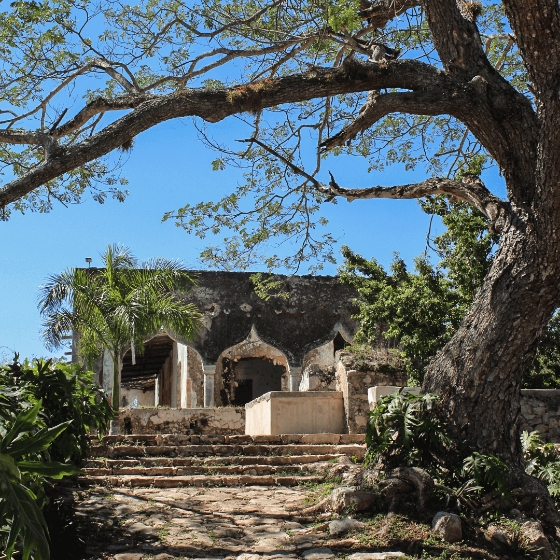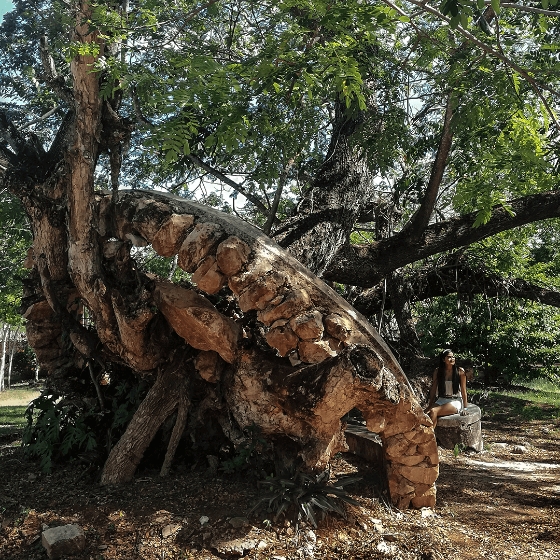
 August 16, 2024
August 16, 2024 |
 Admin
Admin |
What are stalactites and stalagmites?
Stalactites and stalagmites are geological rock formations primarily composed of carbonate minerals, mainly calcite and dolomite. Essentially, stalactites and stalagmites are calcareous rocks formed by the slow dripping of water inside caves, caverns, or spaces in rocks.
Stalactites are rocks that hang from the ceiling of the cavern, while stalagmites are "inverted" stalactites, meaning they form from the ground up towards the ceiling of the cave. In Cenotes Hacienda Mucuyché, you can find both formations in our two cenotes. It is very important that you know that under no circumstances should you touch them, as this would harm their growth process. When you visit our hacienda, our guides will help you make the most of your experience.
How are they formed?
The formation of stalactites and stalagmites is due to a very simple chemical process that occurs on the walls of caves or caverns in conjunction with rainwater or groundwater that seeps in. Additionally, in chemistry, this process is a property of calcium bicarbonates that transform into carbonates.
The caves or caverns in this case are usually composed almost entirely of limestone, a biogenic sedimentary rock. Let's remember that limestone is composed of calcite and dolomite.
Calcite molecules are formed by calcium and carbonate ions and are called calcium carbonate (CaCO3). When rainwater falls on a cave and flows through the rocks, it picks up carbon dioxide and minerals from the limestone.
If we add water, carbon dioxide, and calcium carbonate together, we get this equation:
H20 + CO2 + CaCO3 ⟶ Ca(HCO3)2 Ca(HCO3)2
This is known as calcium bicarbonate, and the water carries the substance, basically dissolved calcite, through the cracks in the cave ceiling. However, once the water comes into contact with the air inside the cave, some of the calcium bicarbonate is converted back into calcium carbonate, and the calcite begins to form around the crack.
These drops of water, enriched with dissolved calcite, slowly start to fall through the cave spaces. Some of them crystallize from the ceiling, forming the stalactite. Another portion of the drops falls to the ground and accumulates, eventually forming stalagmites.
Stalactites
Considering their origin and formation, a stalactite is a sedimentary rock of chemical origin that forms by the crystallization of dissolved calcite from small drops of water that slowly trickle down from the ceilings of caves. Therefore, they have an elongated, inverted conical shape and hang from the cave ceiling.
Stalagmites
Due to their origin, a stalagmite is a chemical sedimentary rock that forms by the accumulation and crystallization of carbonate minerals from water drops that have fallen through the fissures of the caves to the ground. Therefore, they have an elongated, conical shape and grow from the ground towards the ceiling of the cave.
 < BACK
< BACK

Visit a unique beauty of a nature wonder in the south of Yucatan in the municipality of Abalá, Yucatán.

|
Yucatecan Jarana, a Fascinating Dance that Survives Through Time
 April 06, 2025
April 06, 2025 |

|
Haciendas of Yucatán, a Journey Through Time to the Peak of Mexico's Henequen Boom
 June 18, 2024
June 18, 2024 |

|
Cenotes in Yucatan. What an adventure!!!
 September 09, 2019
September 09, 2019 |





